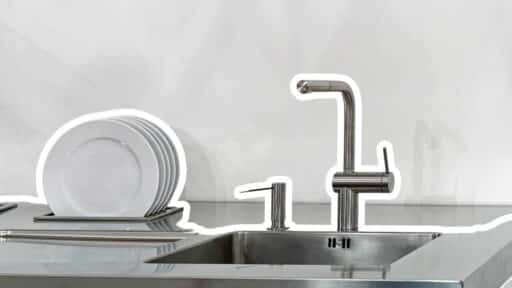Ever heard that loud BANG coming from your garage that sounds like someone just fired a cannon? Congrats – you’ve probably just experienced a garage door spring failure. And if you’re thinking about grabbing some tools and fixing it yourself, well, let me share some thoughts on that brilliant idea.
Garage door spring repair in Chicago isn’t your typical weekend DIY project. These aren’t the little springs you find in a ballpoint pen – we’re talking about high-tension steel coils that can literally launch you across the garage if they decide to snap while you’re messing with them.
The Reality Check About Garage Door Springs
Here’s what most people don’t realize about garage door springs in Illinois – they’re under enormous tension even when they look perfectly harmless just sitting there. A typical residential garage door weighs anywhere from 150 to 400 pounds. Those springs are what make it feel light as a feather when you lift it.
When springs break, your garage door transforms from a convenient home feature into a several-hundred-pound obstacle that won’t budge without serious effort. And trust me, trying to muscle a broken door open is a great way to throw out your back before your morning coffee.
Why Springs Fail More Often in Chicago
Living in Illinois means your garage door springs get worked harder than most places. The temperature swings we experience here – from those brutal February mornings when it’s negative fifteen degrees to sweltering July afternoons hitting ninety-five – put constant stress on metal components.
Cold weather makes steel brittle. Hot weather makes it expand. Spring steel doesn’t appreciate this constant back-and-forth, and eventually something’s gotta give. Add in the fact that we actually use our garages year-round unlike some warmer climates where they become storage units, and you’ve got a recipe for more frequent failures.
Types of Garage Door Springs Around Illinois
Most garage door spring repair Chicago calls involve two main types of spring systems, and understanding the difference might save you from making a costly mistake.
Torsion springs sit above your garage door opening, mounted on a metal shaft. These are the newer, more reliable design that most modern installations use. They’re also the more dangerous ones to mess with because they store energy by twisting – hence the name torsion.
Extension springs run along the tracks on either side of your door. These stretch and contract to help lift and lower the door. While they’re generally considered less dangerous than torsion springs, “less dangerous” still means they can seriously hurt you if handled improperly.
High Cycle Springs vs Standard Options
If you’re dealing with frequent spring failures, it might be time to consider upgrading to high cycle springs. Standard residential springs are typically rated for about 10,000 cycles – that’s roughly seven to ten years of normal use for most families.
High cycle springs can handle 25,000 cycles or more. Yeah, they cost more upfront, but when you factor in service calls, parts, and the hassle of dealing with broken doors, they often work out cheaper in the long run.
The DIY Temptation and Why It’s Dangerous
YouTube makes everything look easy, doesn’t it? Watch a fifteen-minute video and suddenly you’re an expert. But garage door spring repair is one of those jobs where overconfidence can literally send you to the emergency room.
The springs on your garage door store enough energy to lift several hundred pounds. When that energy gets released suddenly – say, because you didn’t follow proper procedures or used the wrong tools – it can cause springs to whip around with tremendous force.
Professional technicians use specialized tools like winding bars and proper safety equipment. They also know how to calculate spring tension, select the right replacement parts, and test the system safely after installation.
Common DIY Mistakes That Cost More Money
Attempting DIY spring repair often creates additional problems that end up costing way more than just calling professionals from the start. Here are some classics:
- Wrong spring specifications – Springs need to match your door’s weight, height, and track radius exactly
- Improper tension adjustment – Too loose and your door won’t open, too tight and you’ll overwork the opener motor
- Mixing old and new springs – This creates uneven lifting that damages tracks and rollers
- Inadequate safety precautions – Leading to injury and property damage
What Professional Spring Repair Actually Involves
Real garage door spring repair in Chicago starts with proper diagnosis. Experienced technicians don’t just replace broken springs – they figure out why the springs failed in the first place.
Maybe your door is out of balance, putting extra stress on the springs. Perhaps the springs were undersized for your door weight, or temperature extremes caused premature failure. Good technicians address the root cause, not just the symptom.
Professional spring replacement includes measuring the old springs, calculating proper tension settings, and testing the complete system after installation. They also lubricate components, adjust the opener force settings, and make sure safety features work correctly.
Tools and Equipment You Don’t Have
Spring replacement requires specialized tools that most homeowners don’t own. Winding bars need to be the correct size and length for safe operation. Standard screwdrivers or makeshift tools can slip, causing injury or damage.
Professional technicians carry multiple sizes of winding bars, proper socket sets, and safety equipment. They also stock various spring sizes and types, so they can handle different door configurations without multiple trips.
Seasonal Considerations for Illinois Springs
Garage door springs around Illinois face unique challenges from our weather patterns. Spring failures spike during temperature extremes – both winter cold snaps and summer heat waves stress metal components.
Smart homeowners schedule maintenance during mild weather periods, typically late spring and early fall. This timing allows for repairs before extreme temperatures put additional stress on aging components.
Winter Preparation and Spring Care
Cold weather affects more than just spring metal – it also thickens lubricants and makes plastic components brittle. Professional maintenance includes switching to cold-weather lubricants and adjusting opener force settings for winter conditions.
Some technicians recommend slightly increasing spring tension during fall preparation to compensate for temperature-related changes. This requires experience and proper tools to avoid over-tensioning.
Cost Factors for Professional Repair
Quality springs cost more upfront but deliver better long-term value. Cheap springs might save money initially, but frequent replacements and service calls quickly eliminate any savings.
Professional spring replacement typically includes labor, parts, and system adjustment. While this costs more than DIY attempts, it includes proper diagnosis, correct specifications, and warranty coverage.
When Replacement Beats Repair
Sometimes spring “repair” actually means complete replacement. Springs that have stretched, lost tension, or show signs of metal fatigue need replacement rather than adjustment.
Mixing old and new springs creates imbalanced lifting that damages other components. Professional technicians usually recommend replacing springs in pairs to ensure even operation and maximum lifespan.
Choosing the Right Service Provider
Not every garage door company handles spring repairs properly. Look for providers with specific experience in garage door spring repair Chicago operations, proper insurance coverage, and transparent pricing.
Ask about their spring specifications, warranty terms, and emergency service availability. Springs don’t typically fail during convenient business hours, so after-hours service capability matters.
Red Flags to Avoid
Be wary of companies that quote prices without seeing your door, promise same-day service without asking about spring types, or suggest repairs instead of replacement for obviously worn springs.
Professional technicians need to measure existing springs, check door weight and balance, and verify track conditions before providing accurate quotes.
Maintenance Tips to Extend Spring Life
While major repairs require professional service, homeowners can take steps to maximize spring lifespan. Regular lubrication using proper garage door lubricants keeps moving parts functioning smoothly.
Visual inspections can catch problems early – look for rust, gaps in spring coils, or signs of wear on cables and hardware. Don’t ignore unusual noises or changes in door operation.
Signs Your Springs Need Attention
Springs rarely fail without warning signs. Doors that feel heavy when lifting manually, gaps in spring coils, or visible rust and corrosion indicate developing problems.
Changes in door balance – one side lifting faster than the other, or the door sagging when partially open – often indicate spring issues that need professional evaluation.
The Bottom Line on Spring Repair
Garage door spring repair isn’t a job for amateur mechanics, regardless of how many tutorial videos you’ve watched. The combination of high tension, heavy doors, and safety considerations makes this a clear case for professional service.
Good springs, properly installed and maintained, can last decades. Cheap fixes and DIY attempts often create more problems than they solve, leading to higher costs and safety risks.
Your garage door is a significant investment in your home’s convenience and security. Treat it accordingly by choosing professional service from experienced technicians who understand garage door systems around Illinois and can keep them operating safely and reliably.
When those springs finally decide to call it quits, resist the DIY temptation and call professionals who have the tools, training, and experience to fix things right the first time.
This article provides general information about garage door spring repair considerations. Always consult qualified professionals for specific repair needs and safety guidance.








